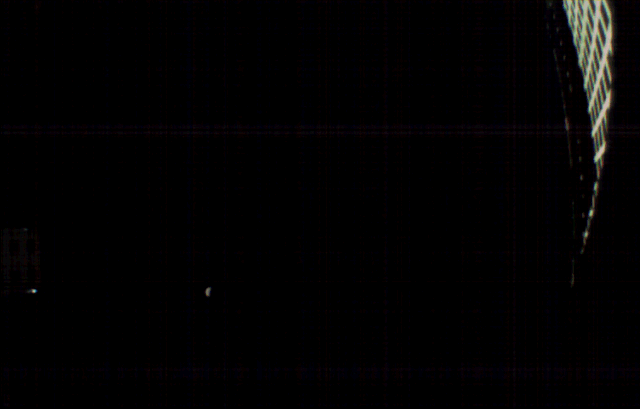RIP, MarCO! The world's first cubesats to Mars are gone for good

In September 2019, NASA started the second half of an epic game of Marco Polo; early this month the agency declared it over for good.
On Feb. 2, NASA formally ended the Mars Cube One mission. MarCO, as it was known, consisted of two tiny cubesats that hitchhiked along with the agency's InSight lander that reached the Red Planet in November 2018. The twin MarCO satellites were the first cubesats to leave Earth orbit, and they aced their goal of reporting on InSight's perilous landing to scientists on Earth.
"WALL-E and EVE performed just as we expected them to," MarCO chief engineer Andy Klesh, of NASA's Jet Propulsion Laboratory in California, said in a statement at the time, referring to the cubesats by their nicknames taken from the 2008 film "WALL-E." "They were an excellent test of how cubesats can serve as 'tag-alongs' on future missions, giving engineers up-to-the-minute feedback during a landing."
Related: How the tiny exoplanet-hunting ASTERIA satellite showed scientists what cubesats can do
As NASA expected, the MarCO satellites fell silent in January 2019 because of how far their orbits carried them from the sun. There was a chance that the agency would be able to reestablish communications with the plucky twins in the second half of 2019. But attempts to do so, which began in September 2019, were unsuccessful, according to a new NASA statement.
NASA will be releasing data from the twin cubesats over the next year, the agency added. That data should help future interplanetary cubesat designers to tap into MarCO's success. Among the earliest of those successors will be launching on NASA's first Artemis mission, an uncrewed flight orbiting the moon.
One such cubesat, dubbed Lunar Flashlight, is designed to contribute to lunar science by identifying ice in craters at the moon's south pole that never receive sunlight. That's the same region where the culminating Artemis mission will land astronauts in 2024, according to NASA plans.
Get the Space.com Newsletter
Breaking space news, the latest updates on rocket launches, skywatching events and more!
- NASA's InSight Mars lander: Amazing landing day photos!
- NASA's Mars InSight lander: 10 surprising facts
- Mars InSight in photos: NASA's mission to probe core of the Red Planet
Email Meghan Bartels at mbartels@space.com or follow her @meghanbartels. Follow us on Twitter @Spacedotcom and on Facebook.
OFFER: Save at least 56% with our latest magazine deal!
All About Space magazine takes you on an awe-inspiring journey through our solar system and beyond, from the amazing technology and spacecraft that enables humanity to venture into orbit, to the complexities of space science.
Join our Space Forums to keep talking space on the latest missions, night sky and more! And if you have a news tip, correction or comment, let us know at: community@space.com.

Meghan is a senior writer at Space.com and has more than five years' experience as a science journalist based in New York City. She joined Space.com in July 2018, with previous writing published in outlets including Newsweek and Audubon. Meghan earned an MA in science journalism from New York University and a BA in classics from Georgetown University, and in her free time she enjoys reading and visiting museums. Follow her on Twitter at @meghanbartels.










